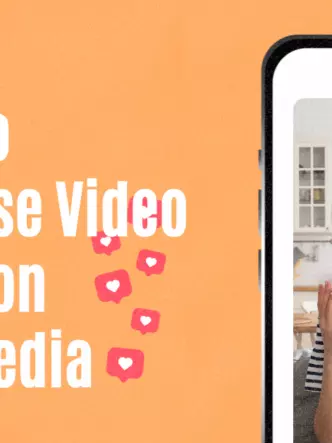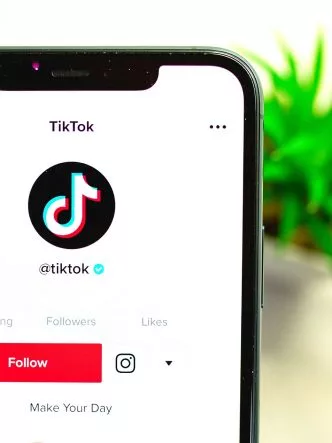Video occupies an increasingly important role in 2019’s version of the internet. This is evident in the meteoric rise of video-centric platforms like Snapchat and Instagram in the last few years.
Here’s another stat: 92% of customers have watched a video about a product that interests them before buying it.
Video platforms are nothing new, nor is their inclusion on social media websites like Facebook and Twitter. If anything, we’ve been watching videos on the internet since before the invention of YouTube almost two decades ago.
In all that time, the internet remained dominated by consumers that have become accustomed to the 16:9 aspect ratio for videos (read: horizontal videos).
The relatively recent rise and acceptance of vertical videos came as a problem for traditional media outlets. Some of them continue to struggle, but it’s a trend that doesn’t seem to be going away soon.
This shouldn’t be all that surprising given we hold our phones vertically 94% of the time.
The rise of vertical video platforms
Popularized by the above-mentioned Instagram, in addition to TikTok, vertical video has been on the rise in recent years. It has been so pivotal in the marketing world that even more established companies like Google and Facebook have felt the need to take notice.
YouTube, for example, has always been a platform dedicated to hosting horizontal videos. When Snapchat began gaining notoriety, the search engine giant took notice of the trend. It went on to incorporate vertical videos as a permanent part of the platform in 2015. Facebook wasn’t left far behind, either, introducing the same feature later that year.
Snapchat arguably heralded the age of vertical video on the modern-day internet. However, of all the companies that have made vertical videos an essential part of their platforms, none has been as successful as Instagram.
Upon launching its Stories feature on their platform in August 2016, critics lambasted Instagram for the decision, accusing it of blatantly plagiarizing a unique Snapchat feature. They pronounced it as an imminent failure – dead in the water before it began. A few months later, it overtook Snapchat with 200 million+ daily users. By early 2019, the number had grown to 500 million.
Today, almost half of all Instagram users view at least one Instagram story a day.
It’s important to note that Snapchat has not faded in to obscurity. Yes, it took a considerable hit as a result of Instagram’s meteoric rise, but Its status as a prominent vertical video platform is still intact, drawing 200 million daily users.
Why are vertical videos important?
Vertical videos are convenient
Vertical videos rose to prominence because they are a reflection of current consumer preferences.
“According to Statistica, about 53% of all web traffic is from mobile devices. Essentially, most our internet experience is from a mobile prism.
Besides, the vast majority of content produced on mobile phones is usually shot vertically.”
For this reason, vertical videos provide the best viewing experience.
This is further magnified by the fact that a vertical video takes up the entire screen, making it much easier to handle the device with a single hand. Holding the phone this way provides more screen real estate to deal with issues like accessing menus and interacting more naturally with the platform.
Social media has gone vertical
The best place to look to understand the impact of video on the internet is to look at social media platforms. As the old saying goes, ‘the money is where the people are.’ With so many people interested in vertical video platforms, it’s no surprise that much of the marketing industry has shifted its attention in that direction.
Facebook adopted the trend, introducing the Stories feature to its own platform in late 2016. YouTube followed soon after. According to Mary Meeker’s Internet Trends Report, vertical video ads were watched to completion at a rate 9 times higher than other videos.
Vertical videos are more engaging
Social media is the barometer by which viral trends are judged. This is because sites like Facebook and Instagram collect enough data to both understand and influence how people interact with different websites.
All major social media platforms today have mobile-friendly websites. This includes optimizing their video viewing experience for mobile devices. Even Facebook Live, which took the internet by storm upon its release, supports vertical videos first. Horizontal videos are also supported, but they aren’t as widespread on the platform.
Square videos were famously adopted by Facebook because they offer higher engagement levels than horizontal video. New research shows that vertical videos are 4 times as effective on Instagram and 2.5 times more engaging on Twitter, according to research by Wibbitz.
This research is complemented by the fact that videos occupy more space on a screen, eliminating distractions like reactions and the comment section.
Lastly, vertical videos have a higher completion rate than horizontal videos. According to MediaBrix, horizontal videos are watched to the end only 14% of the time. A switch to vertical video rallied the completion rate to a whopping 90%.
Vertical videos require less effort
The final reason for encouraging vertical video adoption reflects an inherent quality in human beings: We need things to be as simplified as possible. Put it simply, we’re naturally lazy; yes – too lazy to just flip their phones sideways to watch a video.
Then again, consider a situation in which a lot of people find themselves daily: Trying to keep themselves entertained during their morning or evening commute.
Sitting on a cramped train or bus with barely any space to move means you have to try and readjust yourself to a position that allows you to view videos comfortably. As you might have figured out, horizontal videos greatly limit what you can do with your phone.
We’ll have to contend that the vast majority of videos on the internet are intended to be viewed in landscape mode. To understand the magnitude of horizontal videos, think about the last time you needed to record a long-form video.
Chances are , you did so in horizontal mode. However, expanding on our previously-established nature of inherent laziness in humans, you’ll try and view it in vertical mode. Horizontal videos viewed vertically are ugly and inconvenient, to say the least.
Should you adopt vertical videos on your site?
So here’s the golden question: Should you abandon horizontal videos in favor of the more in-trend verticals?
It depends.
It’s easy to look at successful businesses like The New York Times and attempt to emulate them in their adoption of vertical videos on all their platforms. However, we also have to contend that horizontal videos still have their place on the internet. So, ultimately, it depends on your particular use case.
Before you settle on an answer, the optimal way to find what you’re looking for is gathering statistics. Carry out A/B testing on different social media networks and collect statistics on how people interact with the different videos.
Do the same thing a good number of times and compile them into one big data set. If the numbers for horizontal video look better, you have your answer. Use-cases like wide-screen computers will always remain best-suited for horizontal videos.










